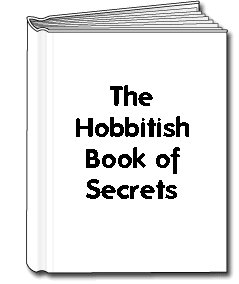Q: What is the Hobbitish Language?
ANSWER: Technically, Hobbitish is a dialect of the Westron language, which was a descendant of the Adûnaic language spoken by the Marachians (the Third House of the Edain). Bëorian was another language or dialect closely related to Adûnaic but it was abandoned by the Bëorians (the First House of the Edain) in favor of Sindarin. The Bëorians were the principal ancestors of the Faithful in Númenor and the Dúnedain of Arnor and Gondor, whereas the Marachians were the principal ancestors of the Kings Men in Númenor and the Black Númenoreans in Middle-earth.
 Adûnaic became the common language of Númenor and it was the language that the Númenoreans took with them to Middle-earth. However, the most widely used language in Middle-earth during the Second Age was Sindarin because that was the common language of the Eldar, who had the largest, highest civilization in Middle-earth throughout those years. Westron, which had evolved from Adûnaic across the lands settled by the Númenoreans, became the de facto common language of Middle-earth in the Third Age as Gondor’s power and influence spread.
Adûnaic became the common language of Númenor and it was the language that the Númenoreans took with them to Middle-earth. However, the most widely used language in Middle-earth during the Second Age was Sindarin because that was the common language of the Eldar, who had the largest, highest civilization in Middle-earth throughout those years. Westron, which had evolved from Adûnaic across the lands settled by the Númenoreans, became the de facto common language of Middle-earth in the Third Age as Gondor’s power and influence spread.
Hobbitish emerged as a dialect of the Shire after the end of Arthedain/Arnor in Third Age year 1974. The Shire-folk became more isolated and insular from this time forward, maintaining close relations with the Bree-folk but gradually losing contact with other peoples living farther away. Their speech became simpler and less sophisticated than that of Gondor, where Frodo and his companions were easily understood but seen as speaking in an uncommon dialect.
In J.R.R. Tolkien’s fiction of having translated the Red Book of Westmarch he represented Hobbitish through a mix of standard English and inventive borrowings of old names and words. He only provided a few examples of “genuine” Hobbitish, which was influenced by non-Adûnaic Northman languages as well as the “foreign” speech of the Dunlendings.
In writing about the languages he drew upon as sources for Hobbit-names, Tolkien said:
In some old families, especially those of Fallohide origin such as the Tooks and the Bolgers, it was, however, the custom to give high-sounding first-names. Since most of these seem to have been drawn from legends of the past, of Men as well as of Hobbits, and many while now meaningless to Hobbits closely resembled the names of Men in the Vale of Anduin, or in Dale, or in the Mark, I have turned them into those old names, largely of Frankish and Gothic origin, that are still used by us or are met in our histories. I have thus at any rate preserved the often comic contrast between the first-names and surnames, of which the Hobbits themselves were well aware. Names of classical origin have rarely been used; for the nearest equivalents to Latin and Greek in Shire-lore were the Elvish tongues, and these the Hobbits seldom used in nomenclature. Few of them at any time knew ‘the languages of the kings’, as they called them.
The names of the Bucklanders were different from those of the rest of the Shire. The folk of the Marish and their offshoot across the Brandywine were in many ways peculiar, as has been told. It was from the former language of the southern Stoors, no doubt, that they inherited many of their very odd names. These I have usually left unaltered, for if queer now, they were queer in their own day. They had a style that we should perhaps feel vaguely to be Celtic elements in England, I have sometimes imitated the latter in my translation. Thus Bree, Combe (Coomb), Archet, and Chetwood are modelled on relics of British nomenclature, chosen according to sense: bree “hill”, chet “wood”. But only one personal name has been altered in this way. Meriadoc was chosen to fit the fact that this character’s shortened name. Kali, meant in the Westron ‘jolly, gay’, though it was actually an abbreviation of the now unmeaning Buckland name Kalimac.
Frankish was a West German language or dialect closely related to the languages spoken by the Angles, Saxons, Jutes, and Frisians who settled in England. The relation of Hobbitish to Westron was in some ways similar to the relation of Old English to Continental German, if one accepts that Old English branched off from the Continental Germanic languages by borrowing words from other languages and dialects before it started to transform into Middle English. For example, Old English borrowed words from Danish, which was part of the Scandinavian language family that descended from a more ancient Northern Germanic language that had once included the speech of the Angles. A phonetic shift that occurred in Scandinavia after the Anglo-Saxons settled in Britain started the process that led to Norwegian, Danish, Swedish, Icelandic, and Faeroese.
See also:
- What is the Origin of the Took Family Name?
- Are There Frankish Influences on Middle-earth?
- Where Did J.R.R. Tolkien Come Up with All the Names for Middle-earth?
- Tip-toe Through the Toponomy
# # #
Have you read our other Tolkien and Middle-earth Questions and Answers articles?
